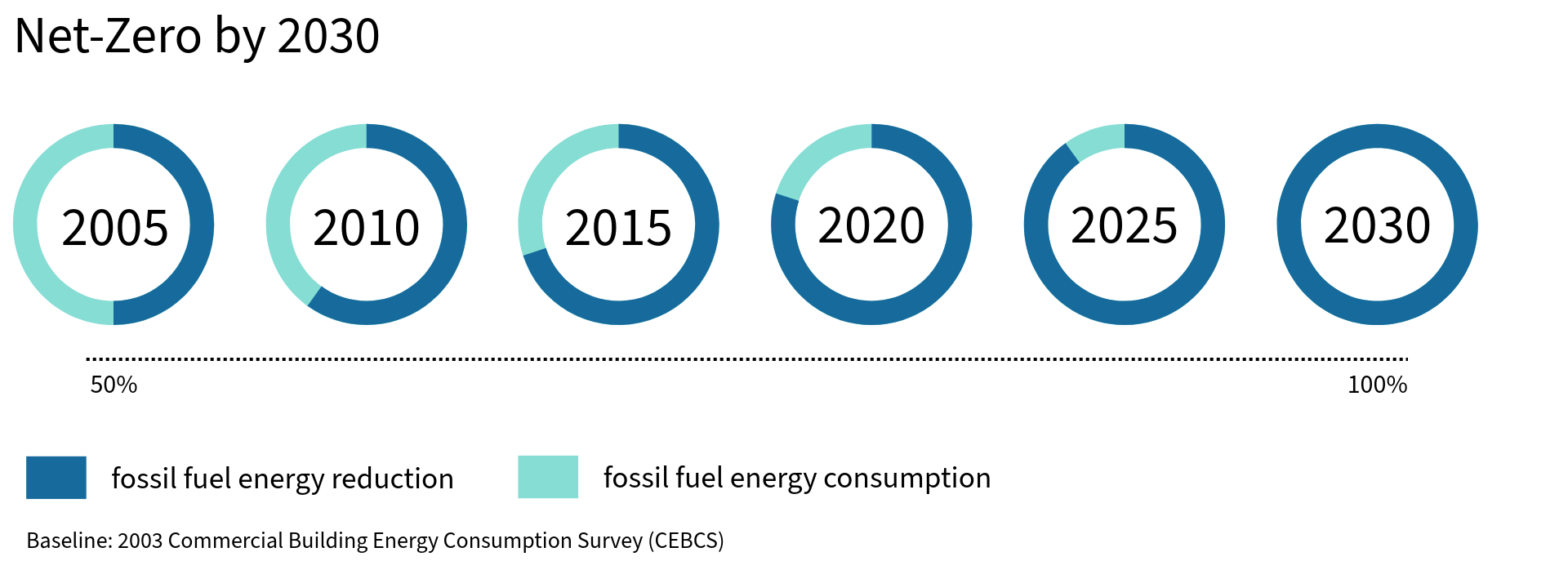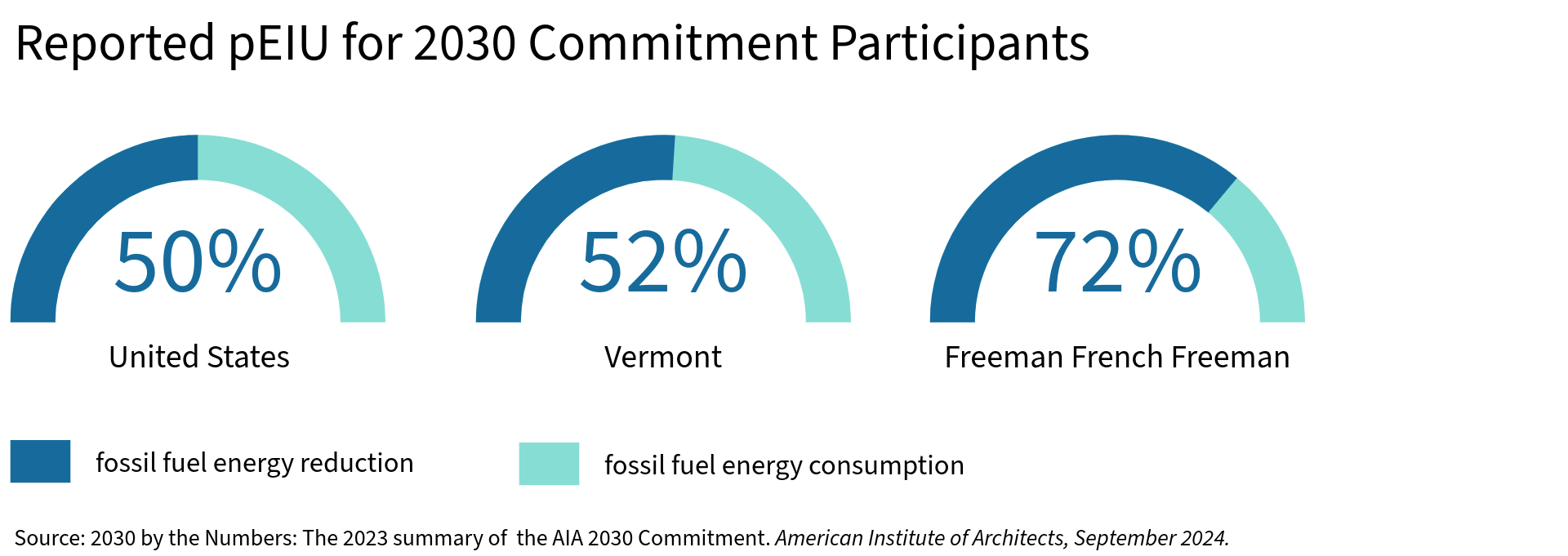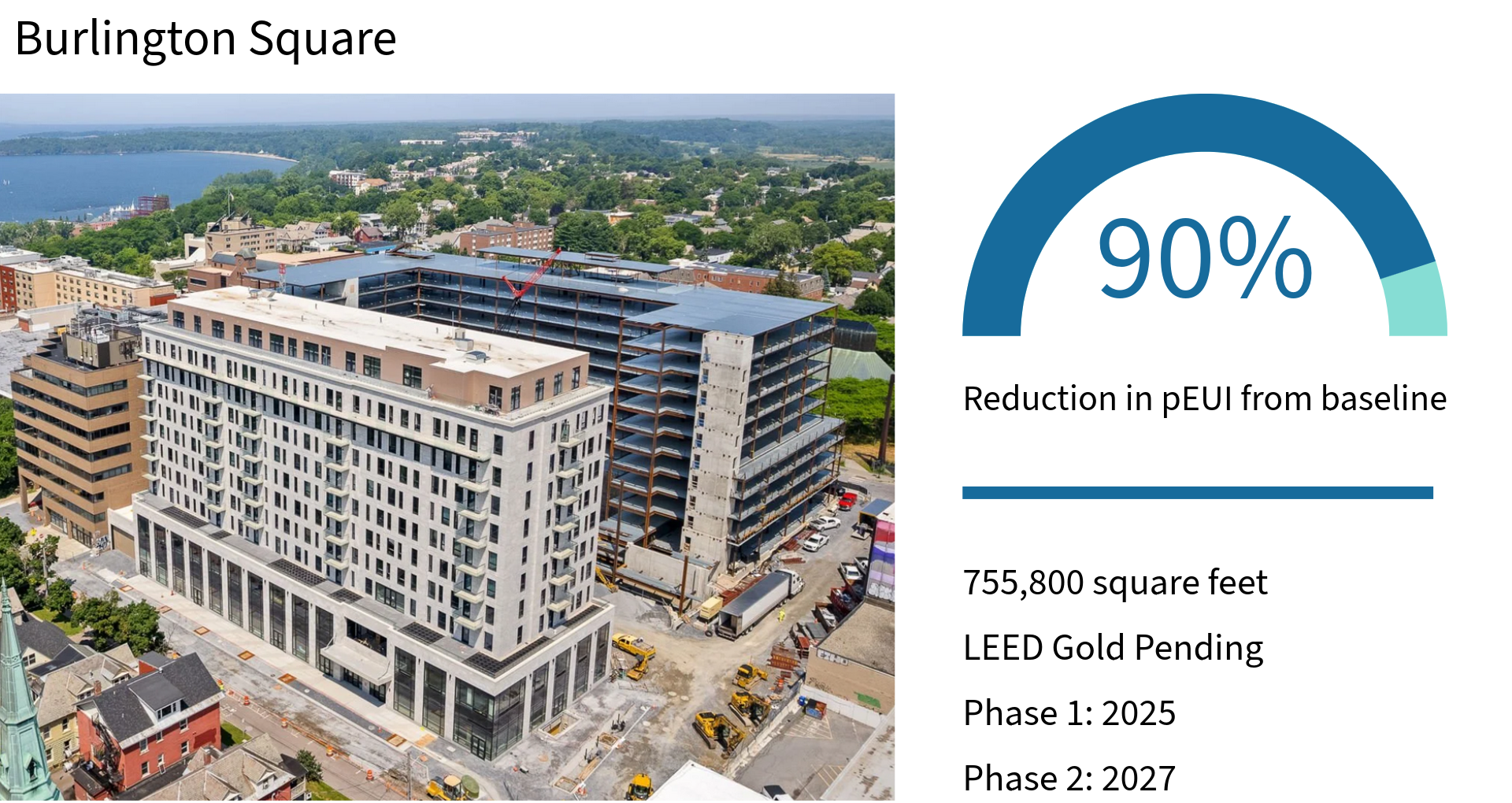News
Freeman French Freeman and the 2030 Commitment: An Update on Our Path to Net-Zero
October 6, 2025It has been five years since Freeman French Freeman signed on to the AIA 2030 Commitment, an initiative launched by American Institute of Architects to help architecture firms like ours combat climate change through sustainable design.
The built environment is responsible for about 40 percent of all energy consumed on earth, making carbon reduction a high priority for architects and engineers worldwide. About 1,350 firms have signed the 2030 Commitment so far.
The goal of the program is to reach “net-zero” carbon emissions for all new construction and major renovation projects by 2030. Buildings achieve net zero by reducing the energy they consume through smart design while also producing the energy they need using renewable sources. When consumption and production cancel each other out, the net new carbon introduced into the atmosphere is zero.
Authors of the 2030 Challenge, the initiative behind the AIA 2030 Commitment, understood that achieving net-zero emissions would be a stretch goal when the program was first introduced in 2006. For this reason, the path to net-zero includes a series of five-year goals that continue to step up as we approach the year 2030.

So how are we doing?
When we launched our Sustainability Action Plan (SAP) in 2020, the goal was an 80% reduction in projected energy use intensity (pEUI), a standard measure of energy used per square foot. The starting point for this number was the energy consumed by buildings in 2003, as measured by a national survey of energy used by commercial buildings in the United States. A project meeting the 80% goal today, therefore, uses just 20% of the energy consumed by a typical building in 2003—a remarkable achievement.
The first step to meeting our SAP goals was to commit to measuring the pEUI of our projects, which we now do for every new building and renovation project over 10,000 square feet. We provide these results to the AIA annually as part of our pledge to the 2030 Commitment program.
Results have been mixed. We achieved anywhere from 25% to 90% reduction in pEUI for individual projects. Results can vary because of a variety of factors including project type, the budget and priorities of building owners, and site and climate challenges, among others.
On a square-foot basis, however, our average reduction in pEUI is an impressive 72%. While it still falls short of the 80% goal, our performance far exceeds both the state and national averages of 2030 Commitment participants. For 2023, for example, the AIA reported an overall pEUI reduction of 50% nationally, with data coming from nearly 25,000 projects. Vermont’s numbers were just slightly higher than the national average at 52%.

The Road Ahead
Starting this year and continuing to 2030, the pEUI reduction goal for construction bumps up to 90%. While challenging, this goal is not impossible. Burlington Square, which will become Vermont’s largest mixed-use development ever when Phase 2 opens in 2027, meets this target.
And while meeting targets is important, the impact of the 2030 Commitment on our firm runs much deeper:
- By measuring our progress, we now have a much better understanding of how we are doing relative to our peers.
- By embedding sustainability into our company culture, every client benefits from our collective knowledge of products, construction methods, and design strategies that reduce our carbon footprint.
- By improving our knowledge of building science, we can continue to improve the performance of every project we design across all project types.
We encourage you to download our 2025 Sustainability Plan Update via this link. Working together, we can help build a more sustainable future today and for generations yet to come.

Freeman French Freeman and the 2030 Commitment: An Update on Our Path to Net-Zero
It has been five years since Freeman French Freeman signed on to the AIA 2030 Commitment,...
